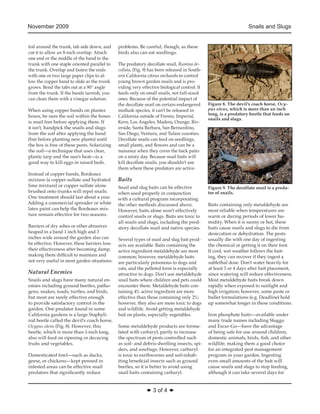This document provides information on identifying and managing common garden snails and slugs. It discusses the most common snail and slug pests in California gardens, including the brown garden snail and gray garden slug. It describes their life cycles, feeding behaviors, and ideal hiding places. The document recommends an integrated pest management approach using multiple control strategies, such as removing hiding places, choosing resistant plant varieties, handpicking, traps, barriers, and baits as part of a cultural control program.



